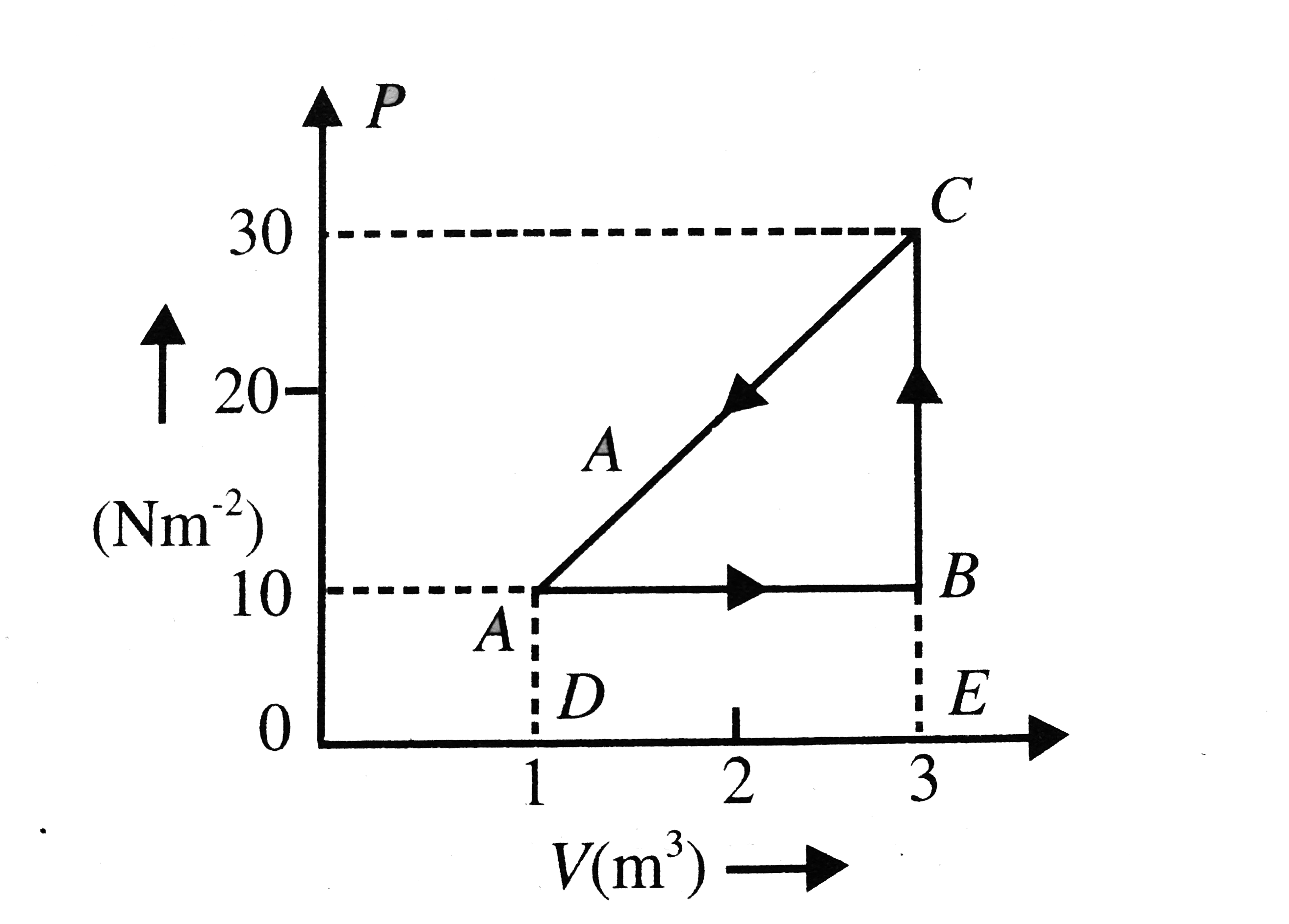In the process shown in figure, the internal energy of and ideal gas decreases by 3p0V02 in going from point C to A. Heat transfer along the process CA is

(−3p0V0)
(−52p0V0)
(−32p0V0)
zero
The correct Answer is:B
Q=W+ΔU
=area under the graph +ΔU
=−p0V0−3p0V02
=−52p0V0
Topper's Solved these Questions
- LAWS OF THERMODYNAMICSBook:DC PANDEYChapter:LAWS OF THERMODYNAMICSExercise:Level 2 More Than One Correct
Explore 6 Videos
- LAWS OF THERMODYNAMICSBook:DC PANDEYChapter:LAWS OF THERMODYNAMICSExercise:Level 2 Passage I
Explore 2 Videos
- LAWS OF THERMODYNAMICSBook:DC PANDEYChapter:LAWS OF THERMODYNAMICSExercise:Level 1 Subjective
Explore 24 Videos
- LAWS OF MOTIONBook:DC PANDEYChapter:LAWS OF MOTIONExercise:Medical entrances gallery
Explore 39 Videos
- MAGNETIC EFFECT OF CURRENT AND MAGNETISMBook:DC PANDEYChapter:MAGNETIC EFFECT OF CURRENT AND MAGNETISMExercise:Integer type Questions
Explore 10 Videos
Similar Questions
An ideal gas is taken through the process ABC as shown in figure. If the internal energy of the substance decreases by 10000J and a heat of 7159 cal is released by the system, calculate the value of meachanical equivalent of heat (J).

View SolutionDoes the internal energy of an ideal gas change in an isothermal process? In an adiabatic process?
View Solution
Knowledge Check
In the process shown in figure, the internal energy of and ideal gas decreases by 3p0V02 in going from point C to A. Heat transfer along the process CA is
 A(+P0V0/2)B(−5P0V0/2)C(−3P0V0/2)D0
A(+P0V0/2)B(−5P0V0/2)C(−3P0V0/2)D0The internal energy of an ideal gas increases during an isothermal process when the gas is
AExpanded by adding more molecules to itBExpanded by adding more heat to itCExpanded against zero pressureDCompressed by doing work on itThe process on an ideal gas, shown in figure,is <br><imga≤ocr_imageload∈g=lazysrc=https://d10lpgp6xz60nq.cloudfront.net/physics_imagesHCV_VOL2_C24_E01_027_Q01.pngwh=80%mx-autosty≤=background:white;>
A(a)isothermalB(b)isobaricC(c)isochoricD(d)none of these.
An ideal gas is taken round a cyclci thermodynamic process ABCA as shown if Fig. If the internal energy of the gas at point A is assumed zero while at B it is 50 J. The heat absorbed by the gas in the process BC is 90 J.
(a) What is the internal energy og the gas at point C ?
(b) How much heat energy is absorbed by the gas in the process AB?
(c ) Find the heat energy rejected or absorbed by the gas in the process CA.
(d) What is the net work done by the gas in the complete cycle ABCA ?

View SolutionDuring the thermodynamic process shown in figure for an ideal gas

View SolutionIf the internal energy of an ideal gas varies as U=2PV and the gas undergoes an expansion as shown below, then heat absorbed in the process will be :

View SolutionIdeal gas is taken through process shown in figure :

View SolutionIdeal gas is taken through process shown in figure

View Solution
